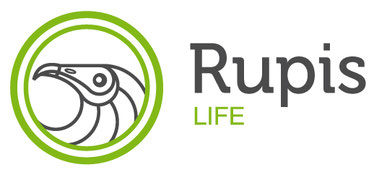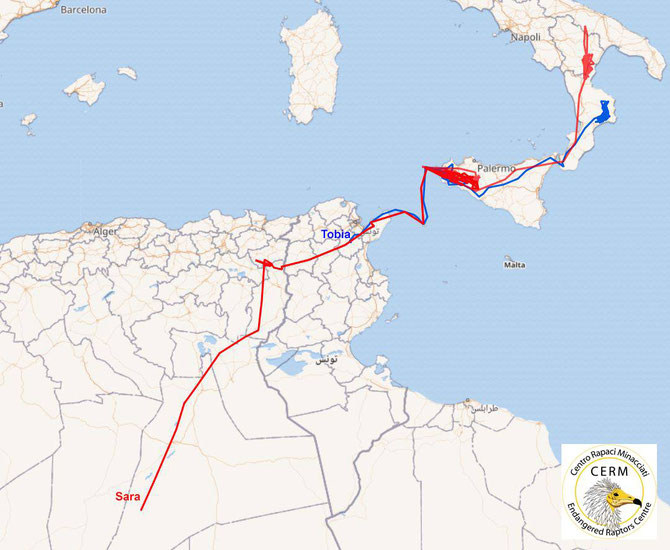
Did you know that the Egyptian Vulture is Europe’s only long-distance migratory vulture? The species travels thousands of kilometres annually during its migratory round trip, spending its winters in Sub-Saharan Africa and returning from March to reproduce in Europe. However, on this long journey, the vulture meets many dangers, and worryingly, out of the four species of vultures in Europe, it’s the one that is still in decline.
Research
A new study reveals amazing flexibility of migration among Egyptian Vultures as well as their exposure to threats in over 40 countries along their migratory routes – a milestone for Egyptian Vulture research. This work includes data from 35+ authors and the migration journeys of almost 100 individual birds and provided fantastic insights into the long journeys these species undertake each year.
Some insights from the study:
- The birds breeding in Spain and France had the shortest migration whereas the birds breeding on the Balkan peninsula travelled roughly 2000 km more.
- Some Egyptian Vultures can make the fantastic journey of up to 10,983 km
- Birds breeding on one part of Europe winter in the same part of Africa. Birds from western Europe wintered in western Africa, and birds from eastern Europe in eastern Africa or the Arabian peninsula.
- Their broad distribution presents real challenges for the conservation of the species since threats vary by country. For example, in the Middle East, they get persecuted, whereas, in Nigeria, they are sold in markets for belief-based use.
This study was all thanks to the collaborative effort of Louis Phipps (VCF’s Research Officer), Steffen Oppel, Pascual Lopez-Lopez and Evan Buechley who are co-lead authors of this paper.
Everyone can access the publication!
Recent migration stories
There are a lot of fascinating and diverse migration stories from specific individuals.
Let’s have a look at the different migration journeys of birds leaving from the Douro Valley that borders Spain and Portugal, Italy and Bulgaria.
LIFE Rupis birds returning to Africa

The Egyptian Vultures tagged as part of the LIFE Rupis project have a challenging migratory task: crossing the Strait of Gibraltar. This autumn, Faia, Britango, Batuecas A and Rupis have all crossed the strait successfully and reached Africa. See where they are now on our online public maps. For Britango, the crossing of the strait took only 26 minutes! Before crossing, it used a thermal wind to gain altitude and reached a height 2329 meters above sea level. This allowed it to then sail across the strait and reaching Morocco at an altitude of 1107 meters above sea level.
You can watch the crossing in 3D below!
login.ayvri.com
Sara and Tobia
The captive-bred Egyptian Vultures, Sara and Tobia, were released in Italy in 2015. Both birds migrated to Africa after their release and we have been anticipating their return to Italy for years, and finally, they came back home this year! At the end of August, they began their migration journey back to Africa.
During her migration, Sara had to spend an entire month in Sicily waiting for favourable winds to cross the Sicilian Strait. On 7 September at 11 a.m. she finally left for Cape Bon in Tunisia but due to unfavourable winds ended up to the island of Pantelleria. She arrived there at 5 p.m., after flying 130 km over the sea, at a speed of only 21 km/h. So, she spent the night there and the next morning she left at 8 a.m., arriving at Capo Bon at 1:30 p.m., covering another 82 km over the sea at an average speed of only 14 km/h. Low speeds reveal a particular difficulty for these birds to be able to complete the journey that they usually make at about 40 km/h.
Sara was not alone on this adventurous journey – she had Tobia on her side. Thanks to GPS data, we saw that the two met in the skies of Trapani on 6 September at 11 a.m., both coming from different areas. Together they went to Marettimo Island, where they roosted in the same place. The next day they left at the same time following the same route, same stopping points in Pantelleria, same route to Cape Bon and finally the same stopping place in Tunisia.
Sara continued travelling south and has reached Niger, her usual wintering place. Tobia hasn’t been sending signals (last in Tunisia). This is normal since his GPS uses the mobile phone system to send the data and in the area, the telephone antennas are very rare. We hope that he is well and perhaps is still travelling with Sara.

Hedjet breaking records
In September, at the young age of four months old, the Egyptian Vulture Hedjet began his first migration journey! He successfully left the Eastern Rhodopes and reached Egypt, only taking him 9h30 to travel 600km across the sea, breaking records, at times exceeding a speed of 100km/h! Hedjet is a wild chick from the foster nest of the Egyptian Vulture New LIFE project.
On this #WorldMigratoryBirdDay, share the epic migration journey of the Egyptian Vulture on Facebook and Twitter!




